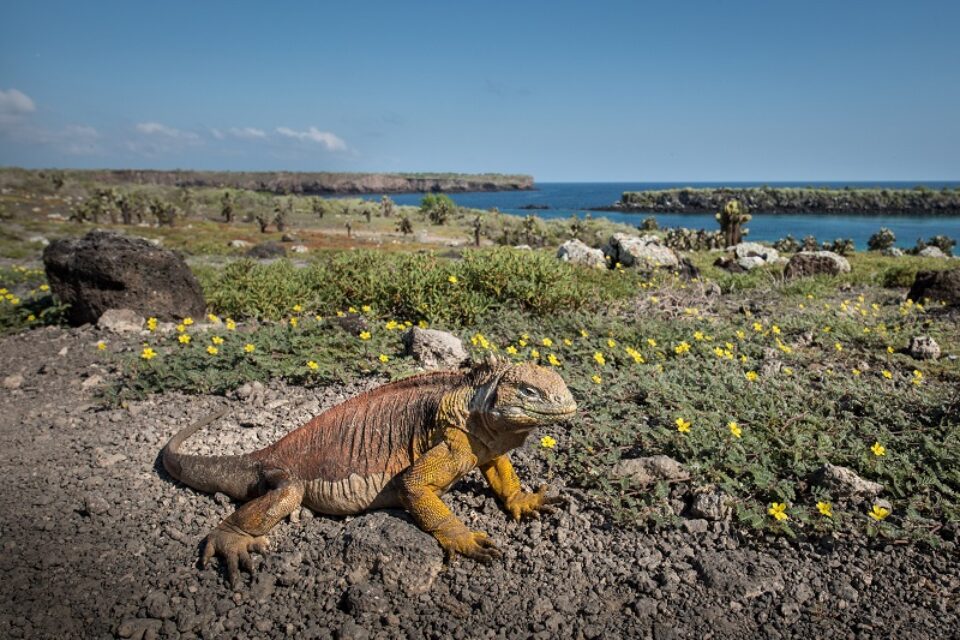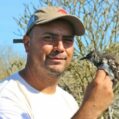

Reintroducing land iguanas to Santiago island: an update
Dr Luis Ortiz-Catedral, lead scientist on the Galapagos Land Iguana Project, explains the success of reintroducing land iguanas onto Santiago.
The Land Iguana Project aims to provide an updated estimation of population size and health status of land iguanas across the Archipelago – one of the main project aims was to reintroduce land iguanas back to Santiago island, where they have been locally extinct since the early 20th century. Dr Luis Ortiz-Catedral, the lead scientist on the project, explains their most recent successes and updates.
What is the status of land iguanas on Santiago island?
From January 2019 to January 2021, a total of 2,480 land iguanas (Conolophus subcristatus) have been reintroduced from North Seymour to Santiago island after nearly two centuries since the local extinction of these large herbivores on the latter. The land iguana population on North Seymour was established with individuals from nearby Baltra island in the 1930s, and since then, it has grown to several thousand individuals. In an effort to reduce their impact on the native vegetation of North Seymour and to aid in the ecological restoration of Santiago, an ambitious plan was drafted in 2017-2018 to transfer land iguanas to their historical distribution on Santiago, including Bahia Bucanero, where Darwin saw these reptiles during his visit to the Galapagos Archipelago.

What happened after the release of the land iguanas on Santiago?
Following the successful release of land iguanas on Santiago, preliminary surveys in February, July and August 2019 revealed that several individuals had dispersed over three kilometres from their original release site and established territories in various habitats near the coast. Numerous iguanas also moved inland, with some individuals dispersing up to two kilometres from the coast. The ongoing COVID-19 pandemic and the resulting travel restrictions halted our ability to monitor these iguanas closely but, in November 2020, a team of Galapagos National Park rangers had the opportunity to visit Santiago and confirmed that the iguanas had excavated numerous burrows and, more significantly, one instance of pre-mating behaviour was observed. While egg-laying or hatching of young has not been confirmed yet, the excavation of burrows and pre-mating displays are encouraging signs that the land iguanas are establishing well on Santiago. We also made important observations on their diet in their new home. Land iguanas consume bark and leaves of palo santo, stems and flowers of Opuntia cacti, and a wide variety of herbaceous plants.
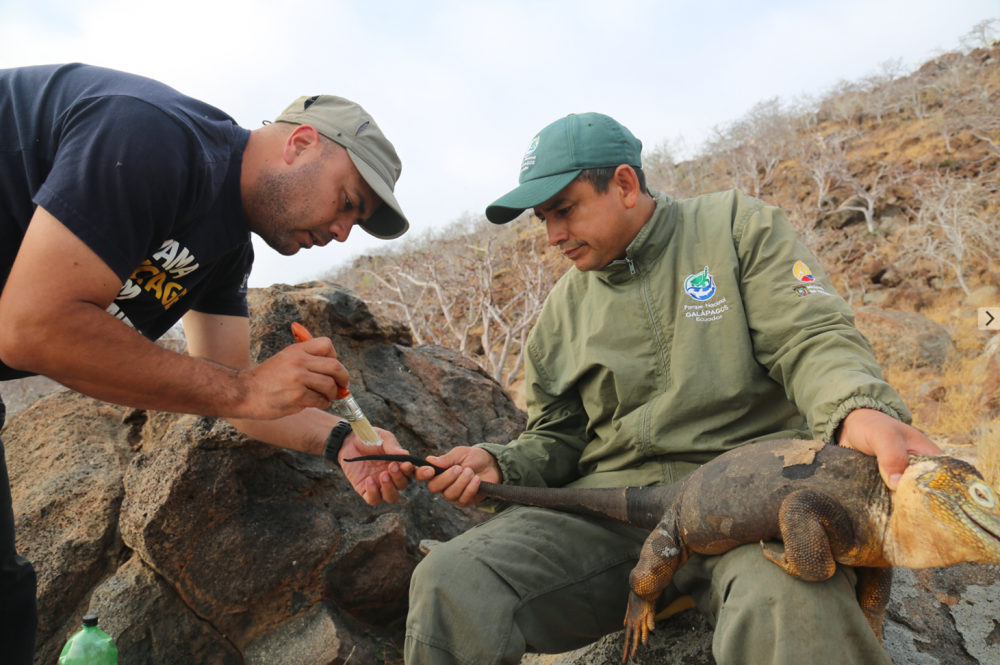
What are the future goals of the Land Iguana Project?
In 2021-2022, the focus will be on determining if land iguanas have successfully reproduced on Santiago. The post-reintroduction health status of a representative sample of iguanas is another priority. It will require re-capture and close examination of individuals to understand better changes in their body condition and establishment on Santiago. GCT, with funds raised by the Swiss Friends of Galapagos Organisation, is supporting a research trip to Seymour Norte and Santiago in November 2021.
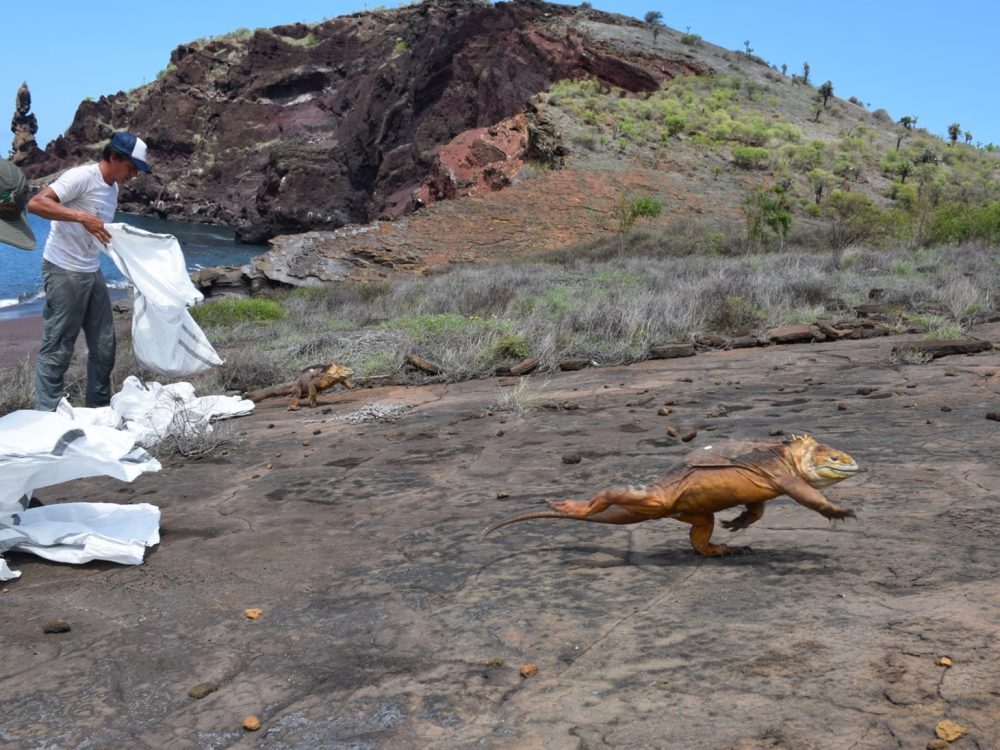
The reintroduction of land iguanas to Santiago was possible due to the support of the Galapagos National Park Directorate, Galapagos Conservation Trust and Island Conservation.
How can you help?
Please help us continue protecting vulnerable Galapagos species like the land iguana by donating today or joining up as a GCT member.
Related articles

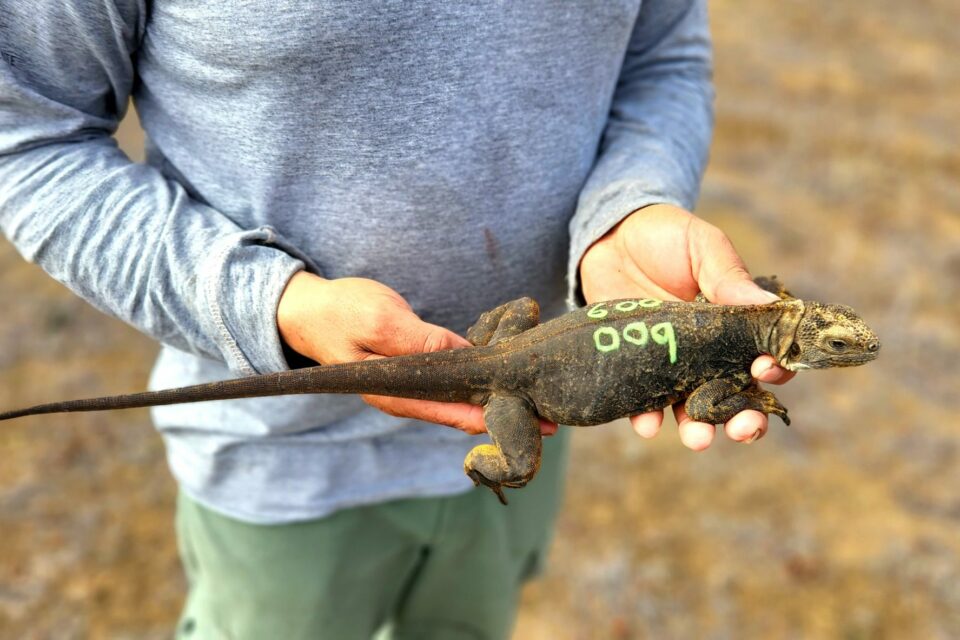
Conservation success: Reintroduced land iguanas breed on Santiago island

Welcome to the hybrid zone
